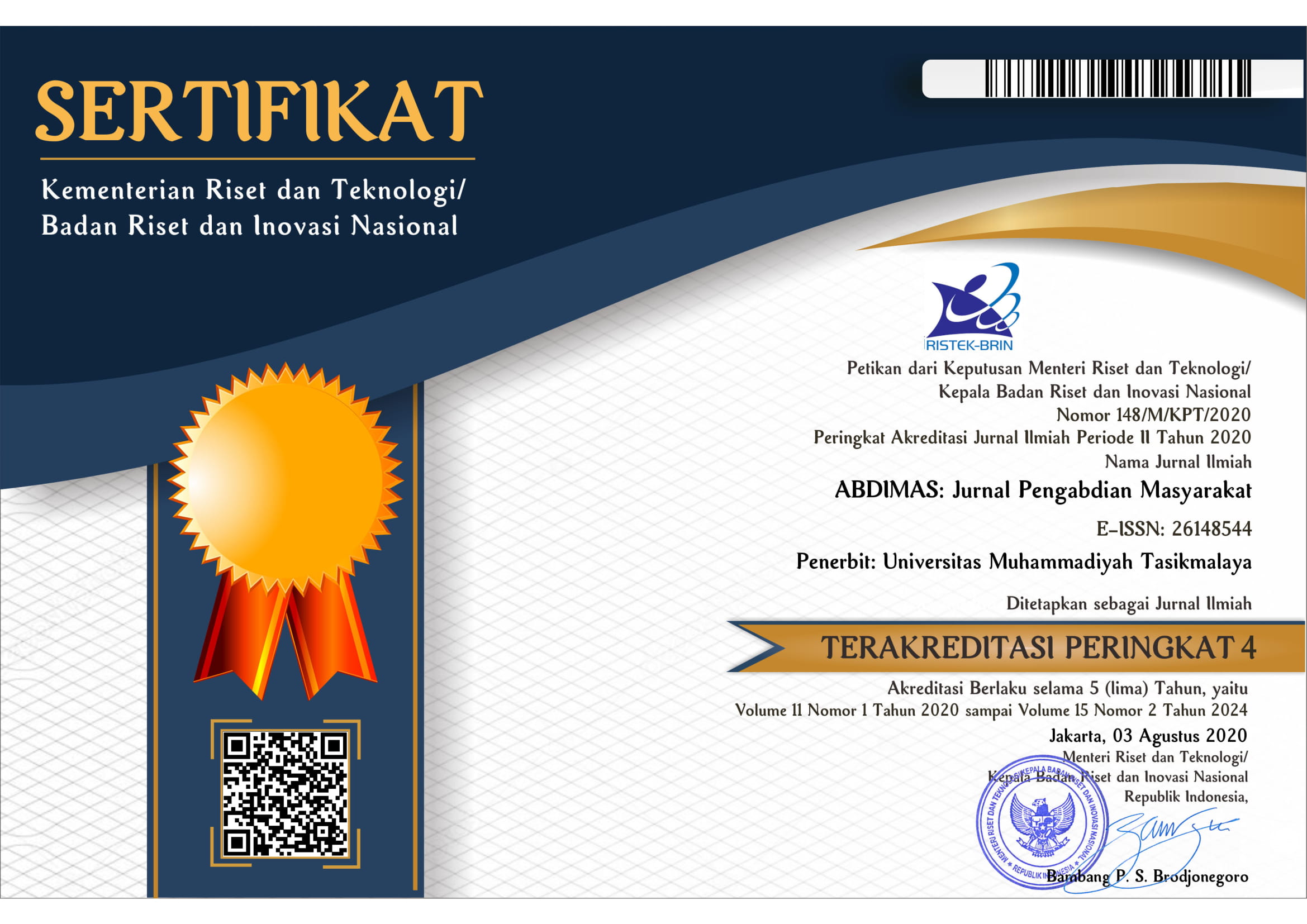Growing PAUD Teacher Creativity Through Creative Play Activities
DOI:
https://doi.org/10.35568/abdimas.v7i3.4876Keywords:
Early Childhood, Creative Play , Teacher CreativityAbstract
Early childhood children are very interested in creative and unique learning media. Teacher creativity in this matter is really needed. It is hoped that the importance of creative play in children can be fulfilled through school. However, in reality teachers are still fixated on the curriculum prepared by the government but there is a lack of development in learning applications. Apart from that, the facilities provided by schools to create creative learning media are still limited. The aim of holding this training is to develop the potential and creativity of teachers so that learning at school becomes interesting. This training was carried out at the Creative Center Building, Purwakarta Regency on 11 May 2024 and in Tegalwaru District, Purwakarta Regency on 18 May 2024. The results obtained by educators can be applied through creative play in learning activities. Based on the results obtained, it is known that the average pre-test result is 70. Meanwhile, the average post-test result is 87. Thus, it can be concluded that there has been an increase in the competency capacity of training participants before and after participating in the training by 17%. These results are input for various stakeholders, especially intuitions that oversee the institutions that are training participants in this program.
Downloads
References
Aini, NQ, & Fahriza, I. (2020). Low Academic in Education. Journal of Educational Dynamics, 13(3), 369–379. https://doi.org/10.33541/jdp.v12i3.1295
Arfa, U., Augustan Arifin, A., & Abdurahman, N. (2022). Improving the Language Skills of Children Aged 3-4 Years Through Canned Telephone Games as a Learning Media in Group a Paud Negeri Pembina 1 Ternate City. Early Childhood Scientific Journal, 4(2), 15–36. https://doi.org/10.33387/cp.v4i2.5338
Ermis Suryana1, Marni Prasyur Aprina2, KH (2022). Constructivist Theory and Its Implications in Learning. (Scientific Journal of Educational Sciences).
Ismail, MH, Halimah, L., Hopiani, A., & AM, MA (2023). Strengthening the Competency of PAUD Teachers in Pangandaran Regency in the Implementation of Freedom to Play through Loose Parts Media. Bina Darma Community Service Journal, 3(3), 223–232. https://doi.org/10.33557/pengabdian.v3i3.2658
Journal of Education and Science Research Thought, D., & Vidya Fakhriyani, D. (2016). DEVELOPMENT OF CREATIVITY IN EARLY CHILDREN. 4(2).
Melati Indri Hapsari and Heri Martono. (2014). DEVELOPMENT OF CREATIVITY IN EARLY CHILDREN THROUGH PLAY ACTIVITIES. Teacher Scientific Journal, 2(2).
Mulyani. (2005). Lev Vygotsky's Sociocultural Theory. Proceedings of the National Seminar on Postgraduate Science Education at UM, 1(1), 976–984.
Nofianti, R. (2021). Application of Bruner's Theory as a Media for AUD Stimulation. SCENARIO: Seminar of Social Sciences Engineering & Humanities, 131–137.
Priyanto, A. (2014). Developing Creativity in Early Childhood Through Play Activities. Journal.Uny.Ac.Id, 02.
Sutrisna Wibawa Educational and Professional Training Materials for Regional Language Subject Teachers, O. (nd). CLASSROOM ACTION RESEARCH.
Sawyer, R. K. (2021). The iterative and improvisational nature of the creative process. Journal of Creativity, 31(July), 100002. https://doi.org/10.1016/j.yjoc.2021.100002
Widayati, A. (nd). CLASSROOM ACTION RESEARCH.














